National Honey Bee Day 2018: What’s being done to save the species in Britain
Pollinators may be in decline, but there’s plenty of new ideas, and time, to turn the tide. Ahead of the day on August 18, Jo Lamiri finds the new buzz around bees
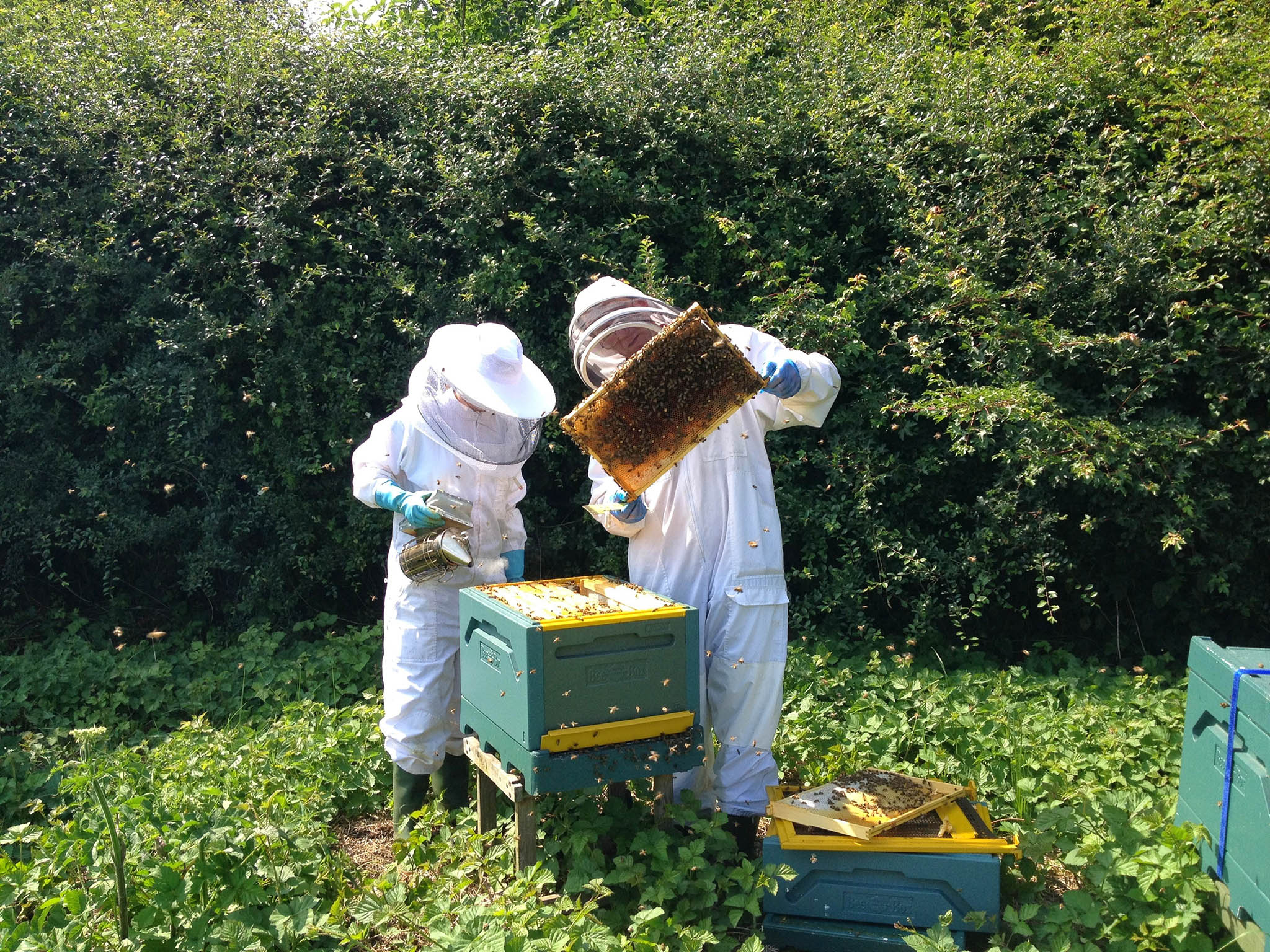
“If the bee disappeared off the face of the Earth, man would only have four years left to live.” Whether or not Einstein did actually say this, it’s still a serious cause for concern.
Despite a world population of between 80 million and 100 million domesticated hives, each containing 10,000 to 60,000 bees, numbers are dwindling dramatically: one-third of the UK’s bee population has disappeared over the past decade and 24 per cent of Europe’s bumblebees are now threatened with extinction.
Given that bees pollinate around one-third of food crops and 90 per cent of wild plants, which in turn provide food for livestock, the implications of this ecological disaster are alarming for biodiversity, the food chain and, ultimately, our ability to feed ourselves.
So, why the decline? There are a hive of factors, not least habitat loss, climate change (recent research shows that pollinating insects are particularly sensitive to factors that upset their biological balance), intensive farming methods and colony collapse disorder (CCD).
This occurs when the majority of worker bees in a colony simply disappear – due, scientists believe, to the use of a new class of pesticides, neonicotinoids, which have increased bees’ susceptibility to the deadly varroa mite, their number one killer.
The European Food Safety Authority (EFSA) has found that certain neonicotinoids pose unacceptable risk to bees. In April this year, the EU agreed to ban outdoor use (but not in greenhouses) of imidacloprid, thiamethoxam and clothianidin – a move welcomed by global campaign group Avaaz, which gained almost 5 million signatures on a petition.
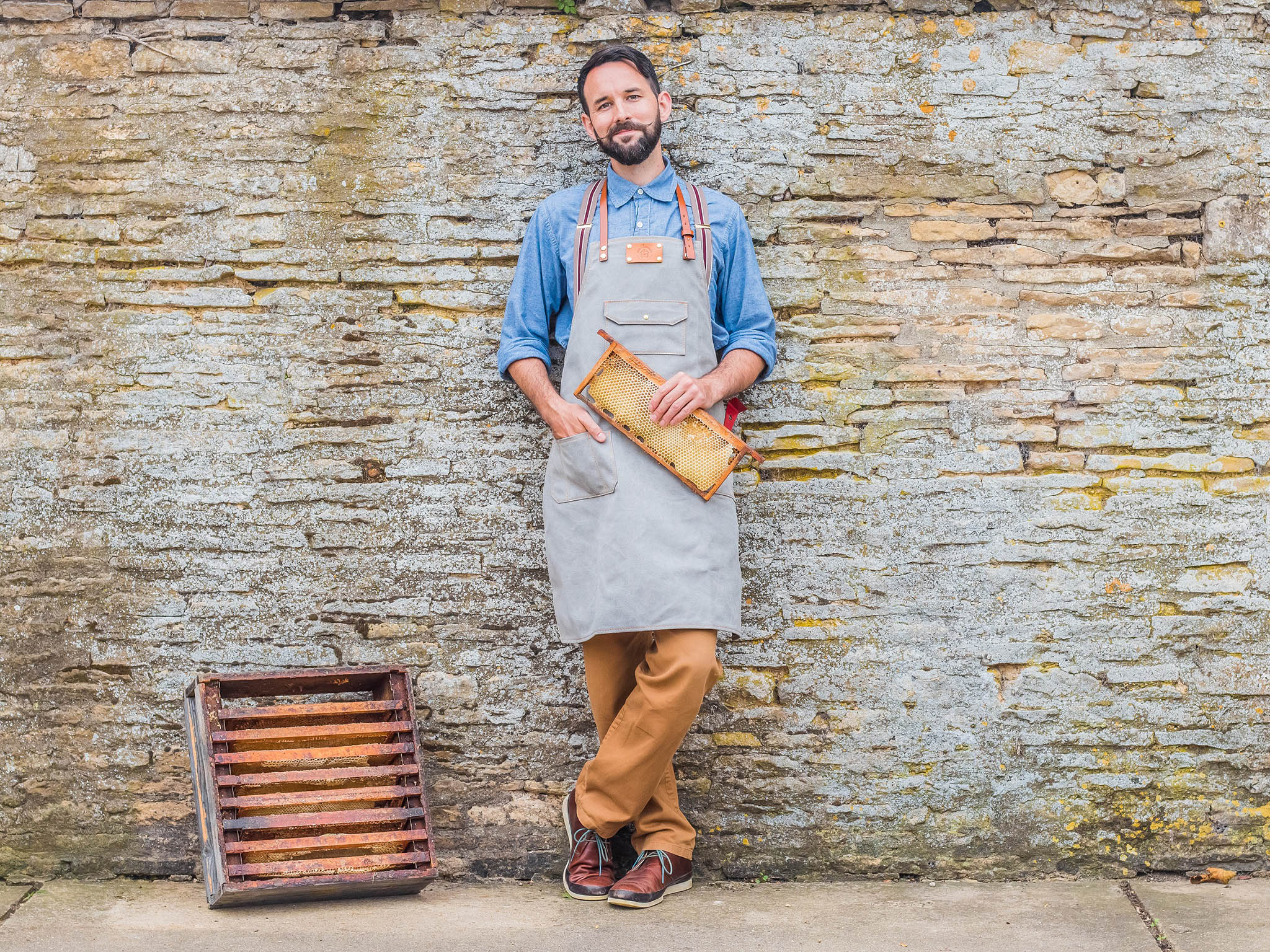
“Banning these toxic pesticides is a beacon of hope for bees,” says Antonia Staats of Avaaz. “Finally, our governments are listening to their citizens, the scientific evidence and farmers who know that bees can’t live with these chemicals and we can’t live without bees.”
Although a global ban could save bees from extinction, some EU member states are now exploiting a loophole that allows “emergency authorisation” for their use, with many farmers concerned that the ban will compromise the quality and yield of their crops.
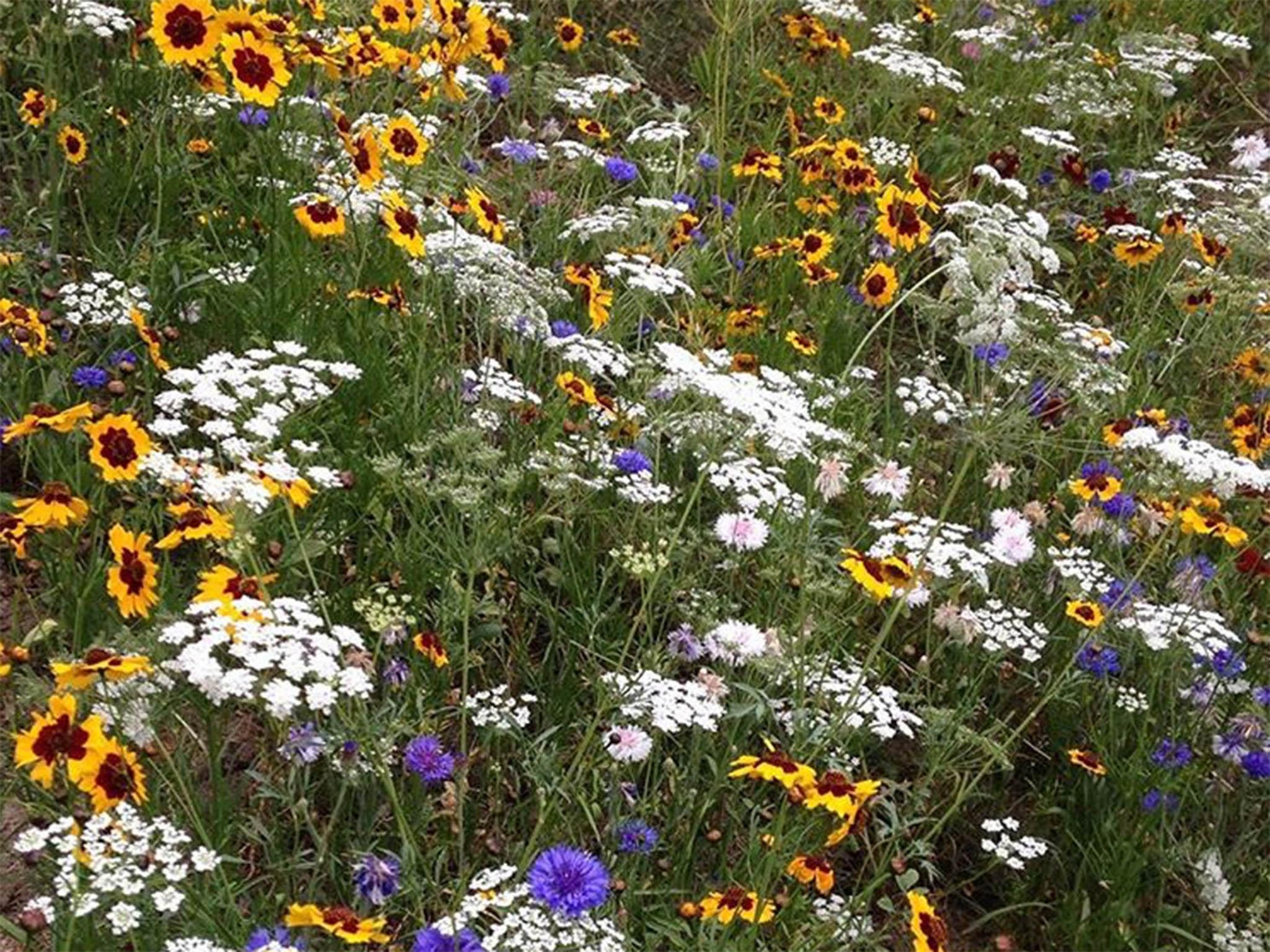
But despite this gloomy outlook, avid apiarists, entrepreneurs and honey producers are doing their bit. Bees for Business was launched by a former behaviour insight advisor, Jez Rose, who quit the rat race to become a bee farmer in Lincolnshire with his wife Caroline.
Passionate about halting the decline of British native bees, he works with big brands, encouraging them to sponsor a hive, learn beekeeping and sell their honey, and is crowdfunding to sponsor 250 hives over the next five years to breed British native bees. He says: “Beekeeping is so much fun, hugely rewarding, great for the environment and especially the declining honeybee population – and a genuine privilege, too!”
Another entrepreneurial new business is the Small Robot Company, an award winning British agritech startup, which harnesses digital planting robots and artificial intelligence via autonomous feeding, seeding and weeding. The robots – available by subscription – are so precise that pesticide use is reduced by up to 95 per cent, allowing farmers to leave field margins, meadows and hedgerows free for wild flowers and, therefore, bees to thrive.

Some honey companies, such as Apidae in North Yorkshire, are going even further: not only do they sell Great Taste Award winning honey from borage, ivy, heather and balsam, but they transport their hives to Lincolnshire, Essex, Kent, Surrey and Wales offering farmers and growers a commercial pollination service to improve yields of their fruit trees, oilseed rape, field beans and borage.
Even the Lottery Fund is getting behind the bees, with a recent £35,200 grant to the B4 Project, Conserving the Native Honey Bee of The British Isles in Cornwall, which will allow beekeepers and conservationists to protect our native bee population while reducing our reliance on imported bees.
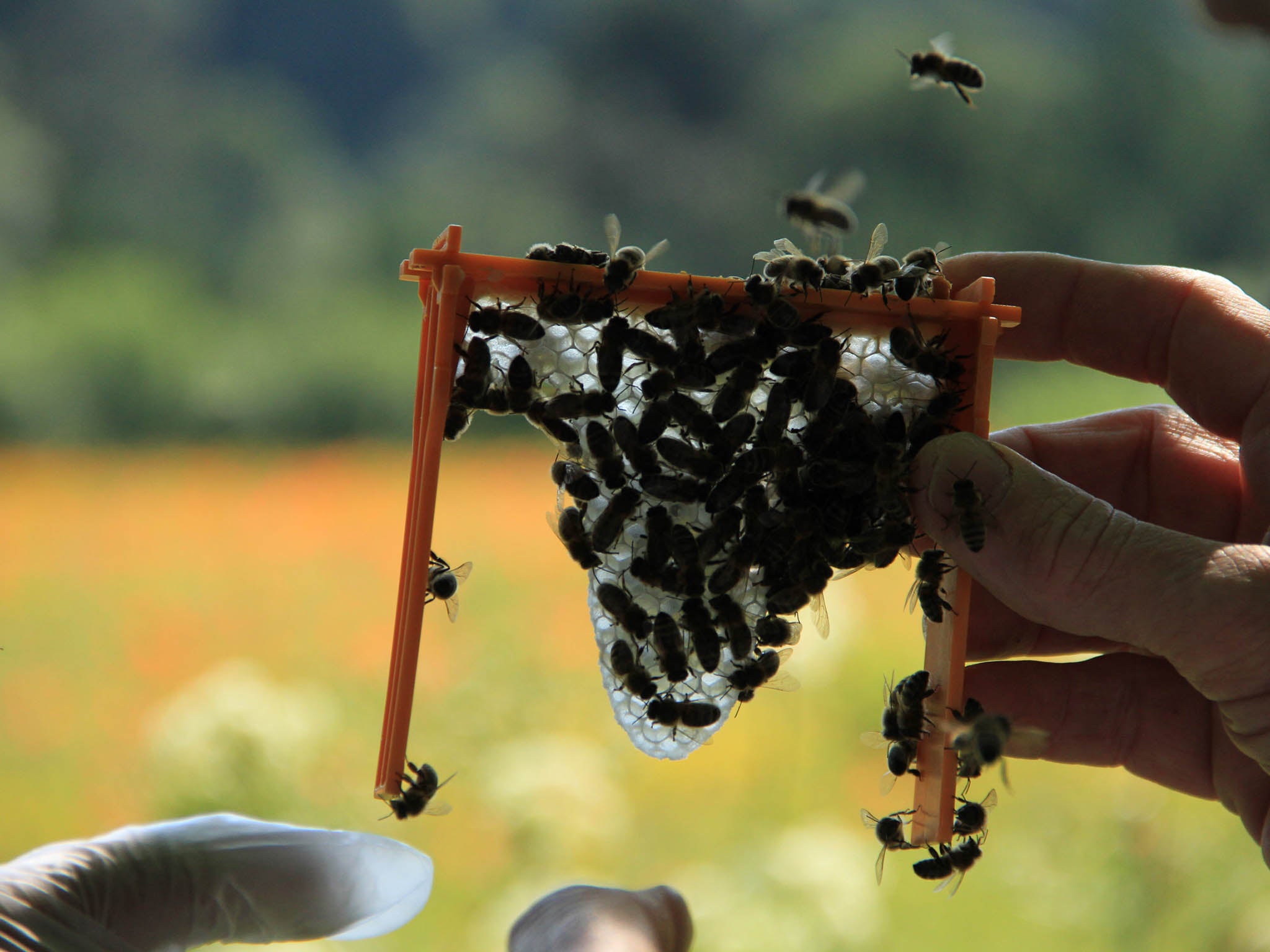
In 2015, there were just 270,000 hives in the UK, compared with nearly a million in 1900, but it the outlook is getting sweeter – and there are many local organisations to help you avoid swarms and stings. Not surprisingly, the British Beekeepers Association (BBKA) offers resources and local groups, plus its virtual Adopt a Beehive initiative with seasonal updates from your beehive and tips for attracting bees to your garden.
Another popular scheme in northwest England is the nonprofit Bees in our Community (BIOC), run by ex-engineer and BBKA member Karl Colyer. He provides a “soft” start to beekeeping, with hive (sponsor, hire or buy), bee colony (10-12,000 upwards), equipment and hive inspections, as well as a callout service to deal with swarms.
One bee convert is Mandy Twells from Cheshire. “Karl started our colony a month ago with 5,000 honey bees – British and European – and we now have 20,000 although the most we ever see at any one time is about 15-20,” she says.
“We had been thinking about having bees for a couple of years as we were worried about the decline of the bee population, but felt quite daunted by the whole process. With Karl’s scheme you sponsor, hire or buy a hive, and Karl is on hand.”
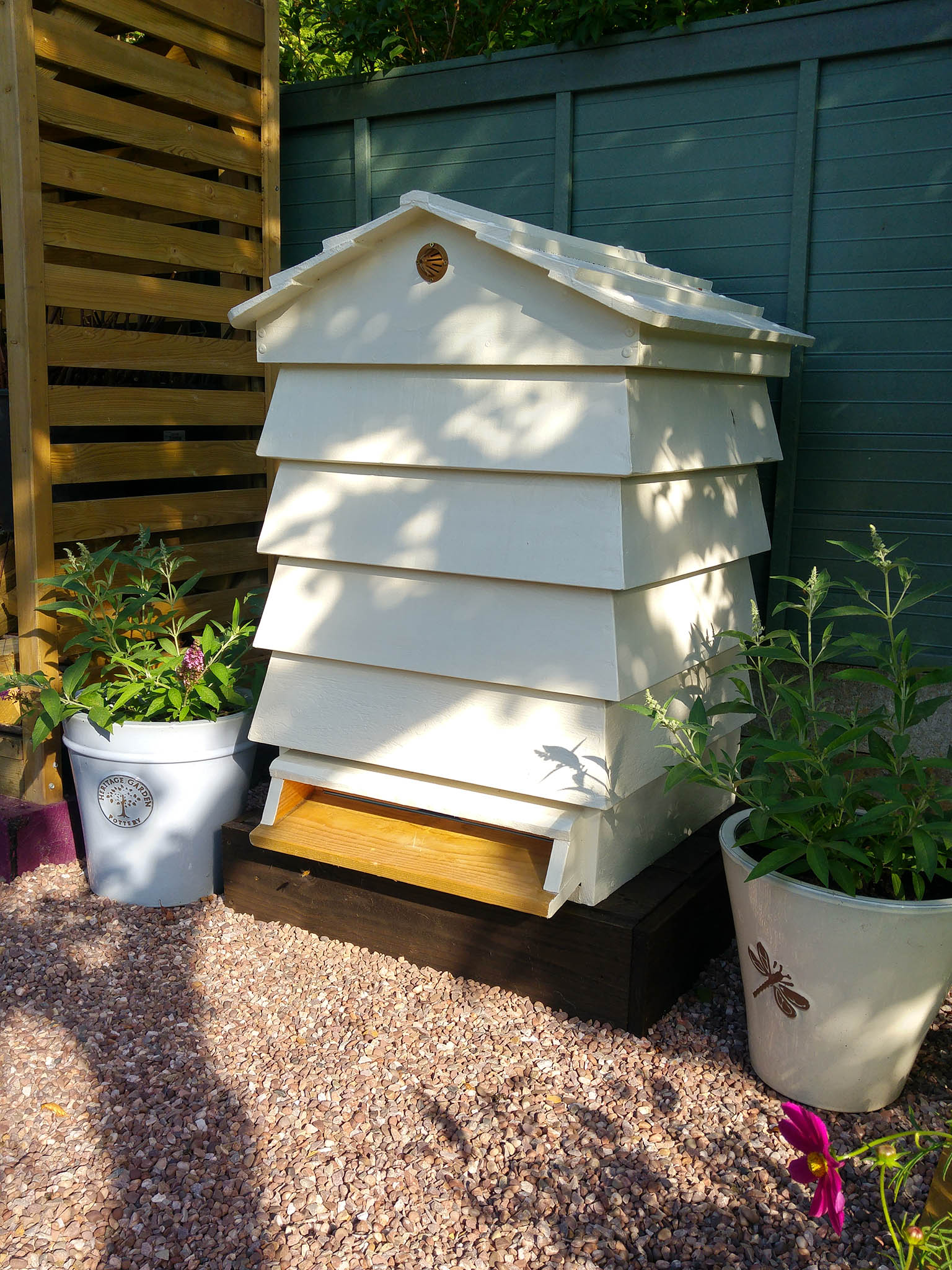
Next summer Karl will train Mandy on how to extract honey, enough for probably about 25 jars.
“Apart from anything else, the hive is a lovely addition to the garden and it’s hynoptic watching the bees fly in and out,” Twells says.
Top tips for a bee-friendly garden
Let your lawn grow: wildflowers rich in pollen such as dandelions, clover, daisies and plantains will thrive.
Choose a range of flower shapes to suit different bee species, as their foraging methods and feeding techniques can vary.
Provide water for bees to take back to the hive.
Ensure year-round planting so bees have a source of flowers in the winter.
Avoid the use of pesticides.
Provide a bee house for solitary bees: make one yourself from a block of wood with holes drilled in it, or bamboo, or buy one.
Focus on cottage garden flowers, eg lupins, hollyhocks, delphiniums, foxgloves, wallflowers, roses and honeysuckle.
Encourage your local council to plants pretty drifts of wildflowers in public places: they are low-maintenance and very bee-friendly.
Join our commenting forum
Join thought-provoking conversations, follow other Independent readers and see their replies
Comments
Bookmark popover
Removed from bookmarks